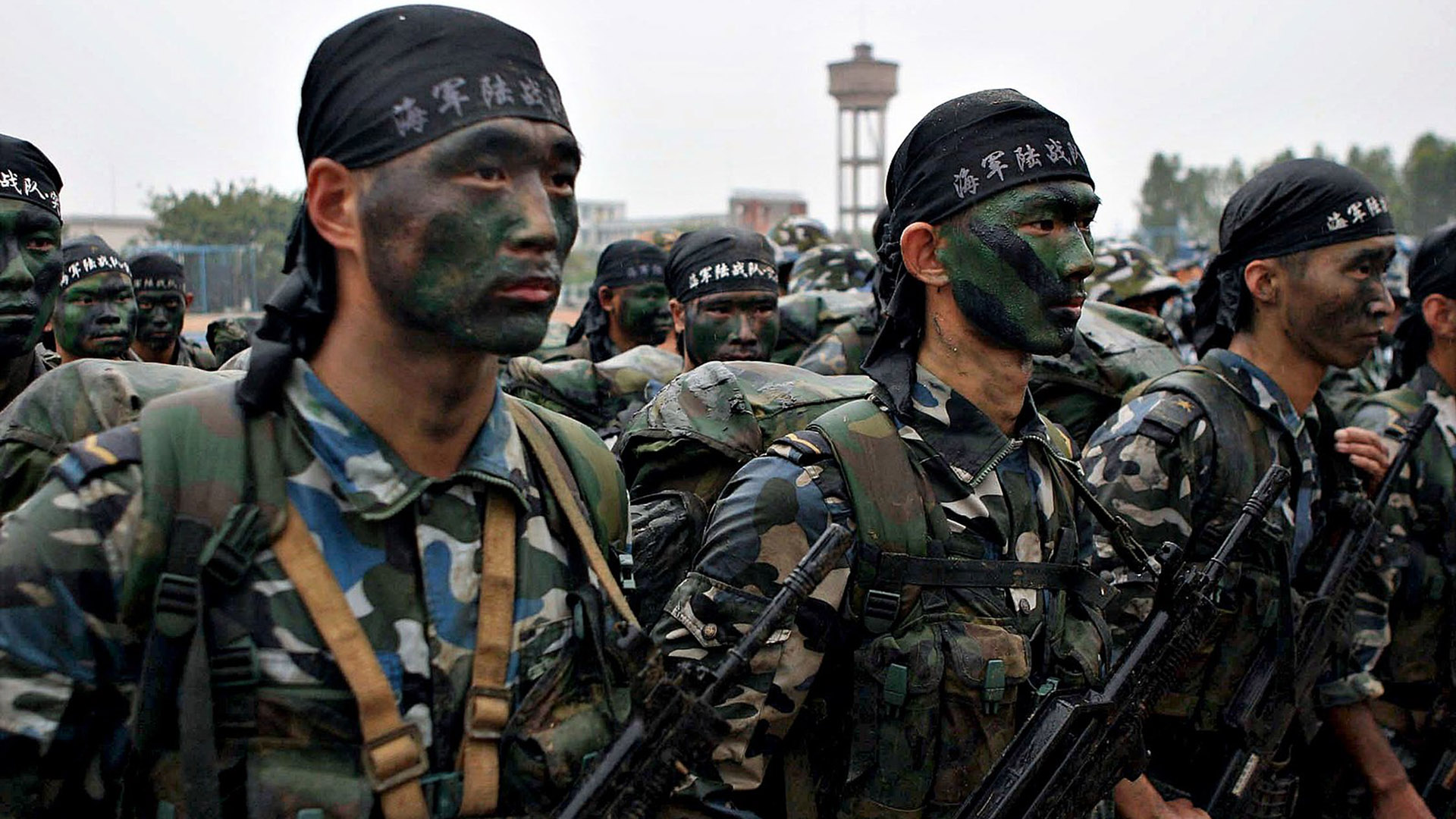

The People’s Liberation Army Navy Marine Corps, or PLANMC, is a small yet growing component of the Chinese military that can project power in Africa, the Middle East, and elsewhere.
Chinese leaders have said they plan to expand the size of the People’s Liberation Army Navy Marine Corps because they anticipate facing a higher demand for ground forces that can carry out a wide range of missions abroad, said Timothy Heath, a senior international defense researcher at the RAND Corporation, a nonprofit research organization.
“Most likely, the marines will serve in primarily non-war missions to protect citizens and their assets. Potential tasks include non-combatant evacuation, cooperation with partner nations for counter-terror operations, and humanitarian assistance/ disaster relief,” Heath told Task & Purpose on Thursday.
China has the largest active-duty military in the world with 1,050,000 troops in the People’s Liberation Army’s ground forces alone, according to the Defense Department’s latest report on Chinese military power.
As of 2022, the Chinese marine corps had expanded from two to eight combined arms brigades, supplemented by aviation and special operations units to make it increasingly capable of protecting China’s interests abroad, the report says. By way of comparison, a typical U.S. Army brigade has up to 5,000 soldiers.
Subscribe to Task & Purpose today. Get the latest military news and culture in your inbox daily.
China’s marine corps is subordinate to the People’s Liberation Army Navy, the report says. As such, it is organized, manned, trained, and equipped by the Chinese navy. Its main missions include training foreign troops, conducting counter-piracy operations, protecting and seizing small reef island outposts, and performing non-combat missions.

It is equipped with PCL-181 vehicle-mounted artillery pieces, a reconnaissance variant of the Type-05 amphibious fighting vehicle, and at least 28 Z-8C helicopters, the report says.
The Chinese marine corps also includes special operations units that specialize in ground-based special operations, maritime missions, non-combatant evacuations, and humanitarian assistance, according to the report.
“They train for more than a year learning airborne, rappelling, reconnaissance, secure communication, navigation, driving, search and seizure, demolition, and hand-to-hand combat skills,” according to the report. “They also practice deploying rubber boats and fast-roping from helicopters into the water.”
It is likely that China’s marine corps is trying to mimic the United States Marine Corps, which has greater operational flexibility, Heath said. But the People’s Liberation Army Navy Marine Corps is constrained by its small size and its lack of experience with expeditionary operations.
“The USMC can carry out expeditionary warfare but also support a wide range of missions owing to organic logistics and multi-service capabilities,” Heath said. “The PLANMC is primarily a naval infantry unit with limited air and maritime capabilities. It primarily focuses on amphibious assault but can carry out some non-war missions. The Chinese leadership hopes the PLANMC can prove a versatile force that can carry out a wide range of missions to protect overseas interests in particular.”
While Chinese marines would play an important role in an amphibious invasion of Taiwan, they would not necessarily serve as the main invasion force, Heath explained. China’s army has dedicated amphibious assault troops that are specifically trained for the main invasion effort.
Indeed, China’s marine corps would be an “enabler more than the big hammer” in an invasion of Taiwan, said James Holmes, the J. C. Wylie Chair of Maritime Strategy at the U.S. Naval War College in Newport, Rhode Island.

“The PLANMC can contribute at least six battalions to a cross-strait amphibious assault, and officers and enlisted folk have reportedly been undergoing a crash course in amphibious doctrine, operations, and tactics since 2017 when the party and military leadership set the expansion and reorganization in motion,” Holmes told Task & Purpose.
An opposed amphibious landing is one of the most difficult operations in naval warfare for any military, and Chinese troops would have to cross about 90 miles of ocean before approaching the landing beaches, Holmes said.
That means the People’s Liberation Army Navy Marine Corps has a lot of work to do if it wants to be ready by 2027 when defense officials have repeatedly said Chinese President Xi Jinping has told the People’s Liberation Army to be prepared for an invasion of Taiwan, Holmes said.
One question remains: How good is the People’s Liberation Army Navy Marine Corps?
Task & Purpose asked the U.S. Marine Corps if its Chinese counterpart is an emerging challenge in the Indo-Pacific region. Headquarters Marine Corps provided a brief response that it “respectfully declines to comment.”
Expanding any organization is always an uncertain process that involves growing pains, Holmes said.
“One way to project how China will perform in amphibious warfare would be to look back to our own history, to the founding years and decades of the USMC,” Holmes said. “Our Marines have a deeply embedded culture of which they are inordinately proud. What is the PLANMC doing to instill such a culture, and how do its efforts measure up to our own back in the Revolutionary era? All we can really do is watch how the corps performs in peacetime exercises and missions to get some purchase on its future prospects.”
The latest on Task & Purpose
- Navy fires captain of guided missile submarine after DUI arrest
- How many soldiers are in a platoon? The U.S. Army by the numbers
- The Navy relieved 16 commanding officers in 2023
- Bradley Fighting Vehicles are taking out modern tanks in Ukraine
- Army CID investigating daycare incident at Carlisle Barracks